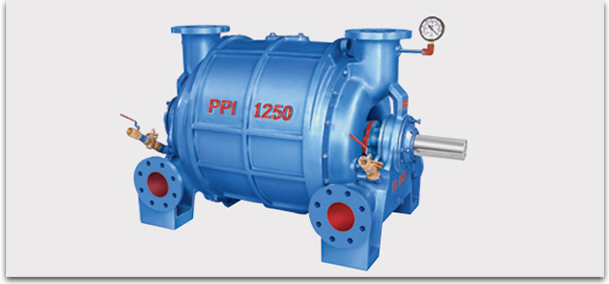Types of Vacuum Pumps
There are different types of vacuum pumps which have basically a common function and that is to remove air, gases and vapour from a confined space and creating a vacuum in that given space. Basically, there are three different types of vacuum pumps, which are explained in details as below:-
Positive Displacement Vacuum Pumps
The positive displacement vacuum pumps are used to create low vacuums. This type of vacuum pump, expands a cavity and allows the gases to flow out of the sealed environment or chamber. After that, the cavity is sealed and causes it to exhaust it to the atmosphere. The principle behind positive displacement vacuum pump is create a vacuum by expanding the volume of a container. For example in a manual water pump, a mechanism expands a small sealed cavity to create a deep vacuum. Because of the pressure, some fluid from the chamber is pushed into the pump’s small cavity. After that, the pump’s cavity is then sealed from the chamber, opened to the atmosphere and then squeezed back to a minute size. Another example of positive displacement vacuum pumps is like a diaphragm muscle expands the chest cavity, causing the volume of lungs to increase. This expansion results to creating a partial vacuum and reducing the pressure, which is then filled by air pushed in by atmospheric pressure. The examples of positive displacement vacuum pumps are liquid ring vacuum pumps and roots blower which are highly used in various industries to create vacuum in confined space.
Momentum Transfer Vacuum Pumps
In the vacuum pump where gas molecules are accelerated from the vacuum side to the exhaust side is known as momentum transfer pump. Based on the laws of fluid dynamics, matter flows differently at different pressures. In the atmospheric pressure and mild volumes, the molecules interact with each other and push on their neighbouring molecules which is known as viscous flow. The molecules interact with the walls of the chamber frequently rather than other molecules when the distance between the molecules increases. This stages is generally called high vacuum which is much more effective than positive displacement. The momentum transfer vacuum pumps are further classified into two types of vacuum pumps – diffusion pump and turbomolecular pump. These both types of pumps blow out gas molecules which are diffused into the pump. The main difference between these two types of pumps is that the diffusion pumps blow out molecules with jets of oil, whereas, turbomolecular pumps use high speed fans. If exhausted directly to atmospheric pressure, these two types of pumps will stall and fail to pump.
Entrapment Pumps
Entrapment pumps work using chemical reactions, are known to perform more effectively because they are usually placed inside the space or container to be vacuumed. The molecules in the air create a thin film which is removed by the entrapment pumps as they chemically react to the internal surfaces of the pump. This type of vacuum pump uses cold temperatures to condense gases to a solid or absorbed state. To create ultra high vacuum chambers, the entrapment pumps are used alongwith positive displacement vacuum pumps and momentum transfer vacuum pumps.
All the above types of vacuum pumps are further classified into liquid ring vacuum pumps, single cone vacuum pumps, close couple vacuum pumps, two stage vacuum pumps, chemical process pumps and twin lobe roots blower. Just go through our website http://www.ppipumps.com/, to know more about these different types of vacuum pumps.

















